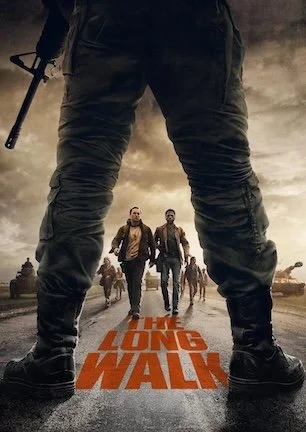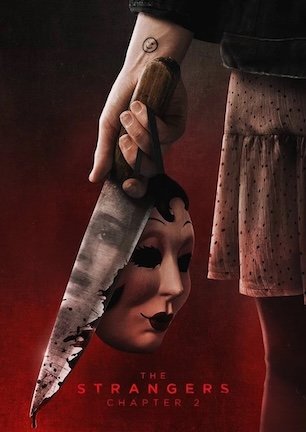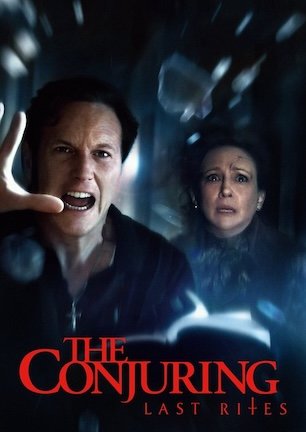Studio: Renegade Studios
Director: Tim Russ
Writer: Ethan H. Calk, Sky Conway, Jack Trevino, Tim Russ
Producer: Sky Conway
Stars: Walter Koenig, Nichelle Nichols, Alan Ruck, Gary Graham, William Wellman, Chase Masterson, Daamen Krall, Crystal Allen, Ethan Phillips, Cirroc Lofton, Lawrence Montaigne, Grace Lee Whitney
Review Score:
Summary:
In an alternate timeline where Captain Kirk was never born, Uhura and Chekhov must make new allies in order to prevent a ruthless despot from enslaving the galaxy.
Click here for Culture Crypt's review of the follow-up film, "Star Trek: Renegades."
Review:
Before evaluating “Star Trek: Of Gods and Men,” ideally before even viewing it, it helps to understand what the project is as well as to know something of the genesis behind its creation. Independently financed, “Star Trek: Of Gods and Men” (STOGAM) went in front of a camera in 2006 as a three-part webseries debuting in 2007, and was recut into a feature film in 2008. Producer Sky Conway describes it as a 40th anniversary celebration for franchise stalwarts eager to see new adventures in the old continuity. What separates STOGAM from other unsanctioned fan films is the abundance of established “Star Trek” alumni on both sides of the lens, lending this labor of love a more “official” aura than its peers.
STOGAM is directed by Tim Russ, Tuvok of “Star Trek: Voyager,” and features Nichelle Nichols and Walter Koenig reprising their roles from the original series, as well as Alan Ruck reprising his from “Star Trek: Generations.” “Deep Space Nine” actors Cirroc Lofton and Chase Masterson also appear, as do Garrett Wang and Ethan Phillips of “Voyager.” Basically, all five live-action “Star Trek” television series and eight of the films are represented somewhere in the cast, crew, story, or all three.
Browse through user reviews on IMDB for a first impression of STOGAM and two camps quickly emerge. On one side are self-appointed franchise flag-bearers, apologetic about the cellar floor production value and simply thankful for the existence of an imaginary entry in their preferred Trek timeline, perhaps overly so on both counts. Representing the resistance are those without rose-colored lenses. Stamping down any “aww, shucks” urge to pinch the cheek of sentimentality, this side criticizes the film for what they see as an amateur effort that happens to have professional names onboard.
For the former camp of Trek diehards, there is indeed quite a bit to love about STOGAM, what with its colorful callbacks to classic episodes including “Charlie X,” “City on the Edge of Forever,” “Where No Man Has Gone Before,” and “Mirror, Mirror.” But being as objective as possible, the latter camp’s brutal honesty is overpowering. The truth is that it is incredibly challenging to score STOGAM with more than one star, no matter what rating system is used.
It’s been 12 years since the death of Captain Kirk, though seemingly everyone who served under his command has since been promoted to captain themselves. Two of those captains, Uhura and Chekhov, have a rendezvous with a third, Harriman of the Enterprise-B, to partake in the dedication of the museum ship Enterprise-M. When a well-timed distress beacon interrupts their reverie, everyone is suddenly off to planet M-622 for an unplanned encounter with a forgotten, yet familiar face.
That encounter transports the trio to an alternate timeline where Kirk was never born, and the Federation’s interplanetary authority was usurped by a powerful warlord. In this parallel world, Uhura, Chekhov, and Harriman fight not only to regain their fractured memories, but to defeat their newfound enemies and restore order to the past.
While the themes involved bear traditional “Star Trek” hallmarks of striving for noble human ideals, there is no mistaking the movie for anything other than fan fiction made flesh. Crammed into an 80-minute runtime are Vulcan mind melds, nerve pinches, assorted secondary characters from the original series, a secondary character from the film series, Klingons, Orions, Andorians, The Guardian of Forever, even a tribble.
A “Star Wars” equivalent would be a story starring Wedge Antilles and Nien Nunb that includes Bea Arthur’s cantina bartender, any bounty hunter who isn’t Boba Fett, Lobot, Ugnauts, Gamorreans, Gungans, a trip to Endor, Jedi mind tricks, a game of dejarik, and one of those orbs that Luke uses to train while wearing a blast-shield helmet. It’s one thing when references pop up sparingly to please delighted fans as quick touchstones. Comprising the entirety of a film with Easter eggs makes it read like something an overexcited adolescent puts to paper as a creative writing assignment.
While the front end fills up with fan service, the back end becomes bogged down by characters filling in backstory blanks through dialogue. This is the kind of over-explanatory script where Chekhov exclaims, “Earth!” when a planet that could not be mistaken for anything else appears in front of him.
STOGAM becomes so caught up in convolution that Deus ex Machinas are the preferred way to move forward. When the initial antagonist reappears at the midpoint, he is inexplicably remorseful about his actions that set the story in motion and is suddenly willing to reset to Square One. Actually, he isn’t willing until the screenplay needs him to be slightly later and Uhura convinces him quickly. It is such a mad dash through his arc that when he matter-of-factly mentions murdering a pregnant woman in a fast breath, no emotion can possibly register. The second antagonist sees a similarly rushed resolution to his subplot when his powers conveniently fail, again for unclear reasons, providing a vulnerability he wouldn’t otherwise have.
Co-writer Jack Trevino, who contributed stories to a pair of “Deep Space Nine” episodes, mentioned in an interview that STOGAM’s $150,000 production budget was only .01% of the same funds for J.J. Abrams’ 2009 “Star Trek” film. But ignoring inflation, that is also about 10% of an average budget for a “Star Trek: The Next Generation” episode, and STOGAM doesn’t have a payroll that includes Patrick Stewart, Jonathan Frakes, and Brent Spiner. In fact, STOGAM’s actors reportedly cut rates to SAG scale, and sets were reused from the “Star Trek: New Voyages” fan series. With many others volunteering time and services gratis, where did the money go? Small though it may be in relation to studio-sanctioned productions, $150,000 isn’t an insignificant sum.
Wherever the money went, it wasn’t into visual effects. The galactic firefights onscreen here wouldn’t make the cut in an MS-DOS “Wing Commander” game, and I’m not sure that is hyperbole. “Babylon 5” was rendering more convincing space battles in 1994 using Amiga computers. It’s over 20 years later, when even off-the-shelf software has long passed the science-fiction standard of 1990s television, yet STOGAM’s starships and laser blasts still look like crude Colorforms being primitively animated.
A “that’s all they could afford” excuse doesn’t wash, either. It is difficult to believe that of everyone contributing to the project without compensation, there wasn’t someone with even average digital skills willing to step up the CGI to something that at least looks like it was generated in the 21st century.
One spacecraft resembles a Death Star covered in ping-pong balls. Some of the library sound effects accompanying the action are recognizable from the 1979 Flash Gordon cartoon. These are worse distractions than the wandering mind musings about Uhura’s earrings pulling earlobes to her shoulders, Walter Koenig’s laughable wig worn as an alternate reality Chekhov, or how much Garrett Wang looks like Taboo from The Black Eyed Peas.
FX are not the sole thorn in the movie’s side. Doug Knapp, whose credits cover dozens of “Voyager” and “Enterprise” episodes, as well as several early John Carpenter films, sadly delivers surprisingly substandard cinematography. STOGAM confusedly employs a handheld camera, something not in keeping with televised Trek’s traditional visual style. Worse, it isn’t employed correctly. In one instance of a ship commander confiscating weapons from two guards, the camera tilts down before the action prompts the motion. A handheld camera is supposed to give a guerilla filmmaking feel of reactionary documentation. When action is anticipated and the resulting movement is premeditated, the intended effect of fluidity is negated.
The audio department drops another ball. Sound bounces off of so many walls that microphone positions are given away anytime a character turns and the volume doesn’t keep up. Warped garbles routinely spike the audio whenever there isn’t any compensation for shouting voices.
Much of the filming may have been done in single takes, as there is a noticeable moment where Koenig delivers a line twice while sparks fire behind him. Rather than retake the shot, it looks like the flub stayed in the picture so as to avoid redoing the background effect.
While the existence of “Star Trek: Of Gods and Men” can be partially credited to Tim Russ’ championing of the project, the film’s failures have to be pinned on him for inconsistent direction. There are scenes where Nichols and Koenig in particular convey emotion with earnest believability (Nichols in the brig when she first recalls her past and Koenig when he reconciles with Harriman after having his memory restored are standout moments). But a bulk of the acting is so poor that when it actually is good, it has to regrettably be described as “surprisingly decent” or “not bad” by relation.
This is a cast capable of better work. And it seems like they were granted permission to provide whatever level of enthusiasm they wished, perhaps with Russ unwilling to run his show as anything above a fan-made production as a courtesy since so many participants were taking pay rate hits. How else to explain something such as Herbert Jefferson Jr. reading his lines like a bizarre Jamaican pirate? That sounds like something an actor decides to indulge in on a whim, and no one has the courage to tell him no.
In spite of everything, the rating thumb leans with reservations just slightly above center, unable to turn fully downward because even a disenchanted Trek fan cannot help but appreciate “Of Gods and Men” more than it deserves. However, it is that same Trek fan fighting to prevent the thumb from tilting any higher, because willingly accepting less means there isn’t incentive to offer more.
The pro side of the argument is understandable. The nostalgia factor soars so high here that it exits Earth’s stratosphere and orbits Vulcan. Renegade Studios’ productions are almost certainly the last there will be featuring original cast members and tethers to the familiar Trek universe. On that level, the gratitude that lenient fans have for STOGAM even gracing their computer screens is somewhat reasonable.
That said, being supportive of what Russ and Renegade are attempting to accomplish shouldn’t mean having to sacrifice acceptable entertainment standards. Fully forgiving the film means granting permission to give fans subpar presentation values and performances, and that is not okay.
Goodwill shouldn’t be required to make a movie better than it is. Watching faces and names you’ve grown to respect and admire for decades operating at an inferior level is frustratingly uncomfortable, and inspires reason to ask, is a lackluster production truly preferable to nothing at all? If the notion of perhaps putting live-action TOS fiction to bed brings up an uneasy question, ask this instead: if none of the notable Star Trek personalities participated in this project, and everything else remained as is, how much enthusiasm would there be for “Star Trek: Of Gods and Men?”
Review Score: 55






It assumes everyone watching must be a dimwit too dense to understand how the most basic storytelling concepts work.